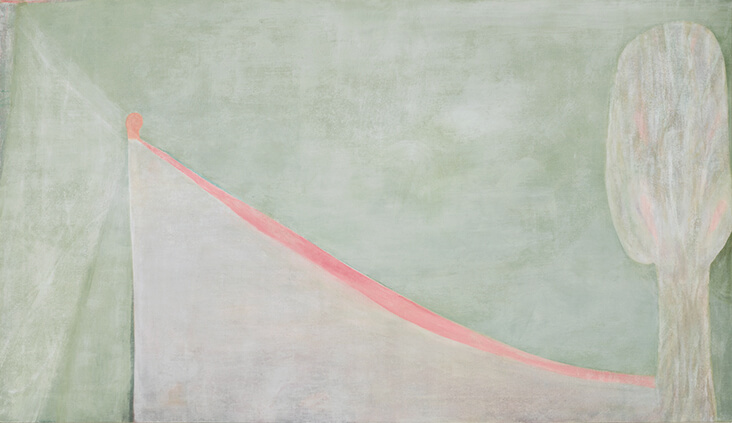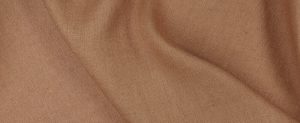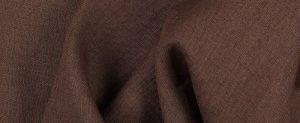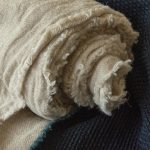FS Colour Series: GRAY CASHMERE Inspired by Hiroshi Sugito’s Softly Diffused Light
Contemporary Japanese artist Hiroshi Sugito draws us deep into his world of meditative calm, where softly diffused gray light like that of GRAY CASHMERE Linen expands across vast areas of empty space. Sugito made his name in the 1990s as a leader in the Tokyo-pop movement alongside Takashi Murakami and Yoshitomo Nara, but his brand of the style was quieter and more contemplative, combining tranquil expanses of empty space with tiny, barely seen trees, furniture or mystical kawaii creatures. This delicate balance between material objects and the immaterial light around them is what keeps his practice alive and breathing, as he explains, “I guess invisible things should be kept invisible and unexplainable be kept unexplainable. When something appears or is put in, something disappears from the same moment. I am just chasing them like an endless game.”
Sugito was born in Nagoya, Japan in 1970 and moved to the United States with his family when he was still a child. This dichotomy of Eastern and Western influences in his early life would come to shape Sugito’s way of understanding the world and around him, and feed back into his artistic practice as an adult. In 1986 Sugito returned to Japan, settling in Tokyo, where he took drawing lessons with renowned Japanese artist Yoshitomo Nara, a leader in the rising Tokyo-pop movement. Sugito went on to study traditional Japanese painting at the Aichi Prefectural University of Arts, where he was trained in the Nihonga tradition, which focussed on painting landscapes with naturally derived pigments made from rocks, shells, corals and stones onto earthen walls, wood, silk, linen and paper. The resultant Nihonga style had a dreamy, elemental lightness that lit up Sugito’s imagination.
Following his graduation in 1992, Sugito remained in Tokyo, where he gradually began to find his signature style of spacious airiness, peppered with tiny decorative touches. His art nodded towards Western Minimalist abstraction with watery washes of translucent acrylic paint on vast canvases, but he also retained a Japanese Nihonga touch, making reference to the wide-open space and natural air of nature. In the early painting Mountain Wall, 1998, Sugito veers close to pure abstraction, with a cool field of monochrome gray that runs in watery streaks across the background. Sugito breaks into this design with perspectival lines creating three boxed in walls, while tiny saplings scattered across the floor and a distant green mountain create a dream-like theatrical stage.
Crossing the Sea, 1999 is even more simplified and abstract, with a vast stretch of textural turquoise blue in the foreground, while a thin band of cool, metallic grey becomes the moody sky overhead. This fresh shade of grey also becomes two thin, veil-like curtains that hang on the edges of the painted scene, once again creating the illusion of a stage set. In Red Lounge, 2001, Sugito ups the ante with theatrical allusions, transforming the large flat canvas into a spectacle of shimmering, translucent gray light that recalls the stained canvases of Mark Rothko and Helen Frankenthaler. But Sugito also introduces references to Japan here with oriental decoration in the curtains overhead and smoky, steely gray mountains that recall Japan’s ancient traditional landscapes.
In Sugito’s more recent painting The Orange, 2009 we see the same interplay between realism and abstraction, with an ambient turquoise background scumbled over with thin veils of silvery gray. A sweeping wedge of solid gray juts forward over it, tinged on the edge with a stain of pale orange, while a shimmering gray tree to the far-right corner is as fragile and transient as a ghost, quietly whispering at hints of underlying narrative and hidden meaning.
FS GRAY CASHMERE Softened Midweight Linen is also available as Waffle Linen










































Leave a comment